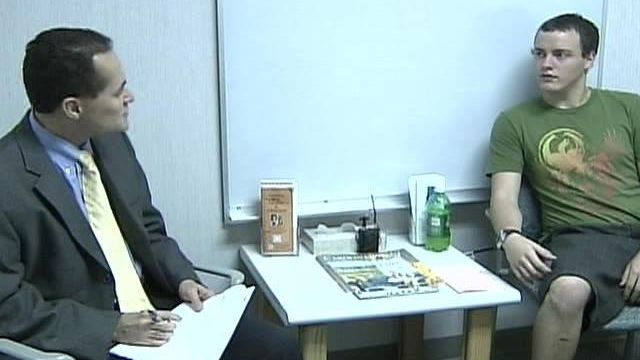Doctors Seeing More Cases of Bipolar Disorder
Researchers used to think bipolar disorder was mostly an adult problem, but a new study shows more doctors are seeing the symptoms in children.
Posted — UpdatedThe National Institute of Mental Health reports about 5.7 million American adults have bipolar disorder.
Researchers used to think bipolar disorder was mostly an adult problem, but a new study shows more doctors are seeing the symptoms in children. The UNC Center of Excellence for Research and Treatment of Bipolar Disorder is conducting research to pin down the causes of bipolar disorder and improve treatment options.
Sean Delaney said he knew he was suffering from depression but was unaware his illness was more severe.
"Just wasn't familiar with that and didn't think anything was wrong at first," said Delaney.
"It's not just feeling good, I mean, it's really excessive. I mean, lots of energy and they might feel less inhibited," said Dr. Jair Soares, director of the UNC Center of Excellence for Research and Treatment of Bipolar Disorder.
The manic phase of bipolar disorder can also include irritability, impulsive or reckless behavior, problems sleeping, irrational beliefs and inflated self esteem. Delaney's experience was not that extreme, but it was troubling enough for him to seek help at the UNC bipolar disorder center.
Delaney takes the drug Lithium, to help stabilize his mood. He also attends psychotherapy sessions and has a good support system.
"That's how we can get best outcomes for people that suffer from bipolar disorder," said Dr. Soares.
The UNC bipolar disorder center provides patients in clinic trials with medications and also conducts research, looking for the genetic and environmental factors that cause bipolar disorder. The goal is early diagnosis, because left untreated, symptoms of mania progress.
"They may go into full blown mania and that takes longer after-wards to get them back to feeling normal," said Dr. Soares.
Delaney is glad he got help when he did.
"I could have been a lot worse off than I am now," said Delaney.
A study in the Archives of General Psychiatry reported diagnosis of bipolar disorder skyrocketed from 20,000 children in 1994 to 800,000 children in 2003.
Dr. Soares said he has seen the symptoms of bipolar disorder in children as young as age six.
• Credits
Copyright 2024 by Capitol Broadcasting Company. All rights reserved. This material may not be published, broadcast, rewritten or redistributed.





